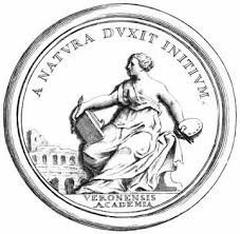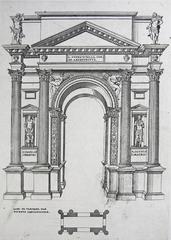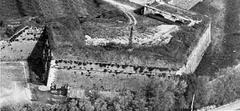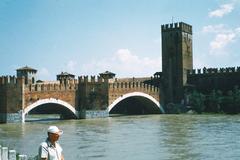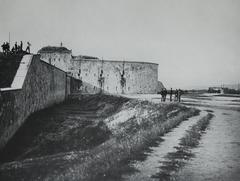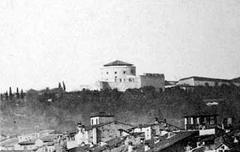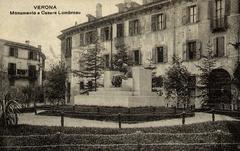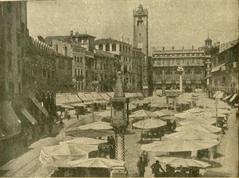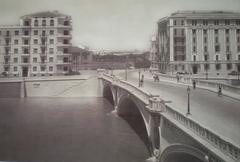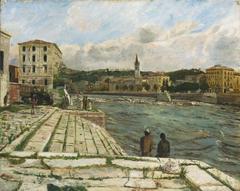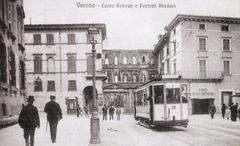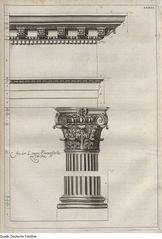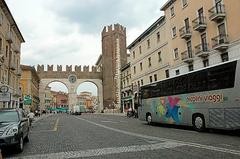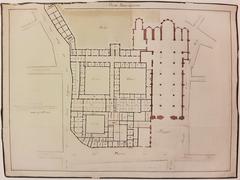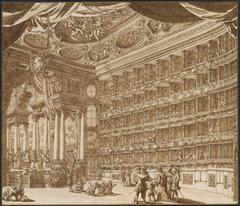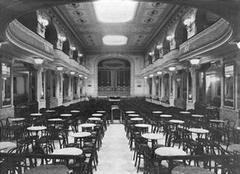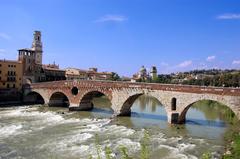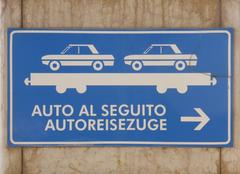
Sant’Eufemia Verona Visiting Hours, Tickets, and Historical Sites Guide
Date: 04/07/2025
Introduction
In the vibrant heart of Verona, Italy, the Church of Sant’Eufemia stands as a striking testament to the city’s rich religious and artistic heritage. Originally founded in the 6th century, the church has evolved over the centuries, embodying Romanesque, Gothic, Renaissance, and Baroque styles. Sant’Eufemia is not only a place of worship but also a cultural landmark, housing invaluable frescoes, funerary monuments, and masterpieces by illustrious local artists such as Giovanni Francesco Caroto and Michele Sanmicheli.
Located near landmarks like Piazza delle Erbe and the Arena di Verona, Sant’Eufemia is an accessible and enriching destination for visitors exploring Verona’s UNESCO-listed historic center. Entry is free, and the church welcomes all with wheelchair accessibility, guided tours, and a deep sense of history. Whether you are seeking spiritual reflection or a deeper understanding of Verona’s cultural tapestry, Sant’Eufemia is an essential stop. For updated details, event calendars, and guided tour bookings, consult official tourism resources or the church’s dedicated pages (Sant’Eufemia Verona Official Website, Visit Verona Tourist Guide).
Contents
- Introduction
- History and Cultural Significance
- Visiting Sant’Eufemia
- Architectural and Artistic Features
- Nearby Attractions and Travel Tips
- Special Events and Restoration Efforts
- Frequently Asked Questions (FAQ)
- Conclusion
History and Cultural Significance
Early Christian Roots and Dedication to Saint Euphemia
Sant’Eufemia’s origins date to the 6th century, constructed over a Roman cardo and dedicated to Saint Euphemia, a revered 4th-century Christian martyr. After destruction in the 1117 earthquake, the church was rebuilt by 1140 in a larger, Romanesque three-nave design. The site served as a focal point for early Christian faith in Verona, contributing to the city’s spiritual legacy (Sacred Wanderings).
Architectural Evolution
The church’s architecture reflects centuries of transformation:
- Romanesque Foundation: The original structure featured a single nave and simple masonry.
- Gothic Expansion: In the 13th century, under the patronage of the Scaliger family and Augustinian monks, Sant’Eufemia was enlarged and consecrated in 1331, becoming the longest church in Verona.
- Renaissance and Baroque Enhancements: Later additions included Renaissance mullioned windows, Baroque decorations, and elegant funerary monuments (Sacred Wanderings).
Artistic Highlights
The interiors boast artworks by painters such as Caroto, Brusasorzi, Jacopo Ligozzi, Francesco Torbido, Il Moretto, and Giambettino Cignaroli. Notable pieces include Caroto’s “Tobiolo’s Journey” (1500), the Madonna della Salute, and fragments of 15th-century frescoes. The church also features significant funerary monuments, including sarcophagi designed by Michele Sanmicheli.
Role in Verona’s Religious and Cultural Life
Sant’Eufemia remains an active parish church, hosting daily Mass, weddings, funerals, and special celebrations, particularly on Saint Euphemia’s feast day (September 16). It is a vital spiritual and community hub within Verona’s UNESCO World Heritage center (The Blonde Abroad).
Visiting Sant’Eufemia
Location and Accessibility
- Address: Via Postumia, Verona, Italy
- Access: Centrally located, within walking distance of Piazza delle Erbe, Arena di Verona, and other landmarks. The church is easily reached by foot or public transportation (kimberlykepharttravels.com, travelingitalian.com).
Visiting Hours and Ticket Information
- Opening Hours: Tuesday to Sunday, 9:00 AM – 6:00 PM. Closed Mondays and during some public holidays. Hours may vary for religious services or special events.
- Tickets: Free entry; donations encouraged for maintenance. For special exhibitions or guided tours, a modest fee may apply (Sacred Wanderings, Along Dusty Roads).
Guided Tours and Visitor Etiquette
Guided tours are available by prior arrangement through the church or Verona tourism office. Respectful attire (shoulders and knees covered) is required, and visitors should maintain silence, especially during services. Photography is allowed without flash in most areas—always check for posted restrictions.
Accessibility
The church provides wheelchair access via a ramp at the lateral entrance. While the nave and cloister are spacious and generally accessible, some interior areas may have uneven flooring or steps. Contact the church or tourism office in advance for further assistance.
Architectural and Artistic Features
Exterior Façade and Cloister
- Façade: Features a 15th-century Gothic portal with a statue of Saint Euphemia, rose window, Renaissance bifora windows, and funerary monuments including the sarcophagi of Cavalcan Cavalcanti and Tommaso Lavagnoli.
- Cloister: The 17th-century cloister, with Doric columns and a peaceful atmosphere, is accessed through a side entrance. It hosts cultural events and theatrical performances in summer.
Interior Layout, Altars, and Chapels
- Nave: A single, vaulted nave with seven side altars per side, each adorned with significant altarpieces from the 16th century onward.
- Chapels: The Spolverini Chapel is a prime example of Gothic architecture, while fragments of medieval frescoes decorate the lateral entrance.
- Funerary Monuments: Both exterior and interior house a range of sarcophagi and tombs from Romanesque to Renaissance periods.
Notable Artworks
- Caroto’s “Tobiolo’s Journey” (1500)
- Madonna della Salute
- Works by Ligozzi, Torbido, Il Moretto, and Cignaroli
Nearby Attractions and Travel Tips
Combining Visits with Verona’s Historic Sites
Sant’Eufemia is ideally situated for exploring other cultural landmarks:
- Piazza delle Erbe: Historic square with markets and cafes.
- Arena di Verona: Roman amphitheater renowned for opera performances.
- Sant’Anastasia and San Fermo Maggiore: Two other architecturally significant churches (tripomatic.com).
Best Times to Visit
The best periods are spring (April–June) and early autumn (September–October) for pleasant weather and fewer crowds. Early mornings and weekday afternoons offer the quietest experience (kimberlykepharttravels.com).
Amenities
Nearby you’ll find cafes, restaurants (try Osteria al Duca for traditional fare), and shops selling religious items and local crafts. Public restrooms are available in the city center (kimberlykepharttravels.com).
Safety and Security
The area is safe and well-patrolled, but standard precautions are advised. Keep valuables secure and be mindful in crowded spaces.
Special Events and Restoration Efforts
Sant’Eufemia hosts a variety of cultural and religious events, including:
- Feast of Saint Euphemia: Celebrated on September 16 with special liturgies.
- Summer Theatrical Performances: Held in the cloister.
- Restoration Projects: Recent initiatives like “I CARE per Sant’Eufemia” support the preservation of art, including the anticipated unveiling of Louis Dorigny’s “San Cristoforo” canvas (Sacred Wanderings).
Frequently Asked Questions (FAQ)
What are the visiting hours of Sant’Eufemia?
Tuesday to Sunday, 9:00 AM to 6:00 PM. Hours may vary on holidays or for services.
Is there an entrance fee?
No, entry is free. Donations are appreciated.
Are guided tours available?
Yes, tours can be booked in advance through the church or tourism office.
Is the church wheelchair accessible?
Yes, with ramp access at the lateral entrance.
Can I take photographs inside?
Photography is generally allowed without flash; check local guidelines.
Are there special events at Sant’Eufemia?
Yes, including religious festivals and summer cultural performances.
Plan Your Visit: Key Tips
- Arrive early to enjoy a more peaceful atmosphere.
- Dress modestly and respect church etiquette.
- Combine your visit with other Verona historical sites.
- Download the Audiala app for audio guides and interactive maps.
- For up-to-date information, check the Verona tourism website.
Summary and Call to Action
Sant’Eufemia is more than a historical landmark—it is a vibrant center of faith, art, and community in Verona. Its layered architecture, significant artworks, and ongoing cultural events make it a rewarding destination for visitors of all backgrounds. Take advantage of free entry, guided tours, and its prime location to immerse yourself in Verona’s living history. For enhanced experiences, download the Audiala app and consult official tourism resources before your visit.
Sources and Further Reading
- Sant’Eufemia Verona Official Website
- Visit Verona Tourist Guide
- Sacred Wanderings: Churches in Verona, Italy
- The Blonde Abroad: Ultimate Verona Travel Guide
- Along Dusty Roads: Visiting Verona Tips & Guide
- Verona Tourism Official Site
- Kimberly Kephart Travels: Verona Italy Travel Guide
- Traveling Italian: Verona Travel Guide
- Tripomatic: Must-Visit Catholic Churches in Verona
- Verona.net: Church of Sant’Eufemia




